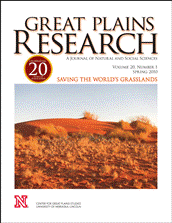Center for Great Plains Studies

Great Plains Research: A Journal of Natural and Social Sciences (through 2013)
Date of this Version
August 1994
Document Type
Article
Abstract
Already the subject of official inquiry, interviews, innumerable articles, books, symposia, movies, recreations, demonstrations, and undoubtedly more than one barroom fight-one could legitimately ask: is there anything new left to be said about Custer's' 'Last Stand" at the battle of the Little Big Horn? To the delight of some and the dismay of others, this book answers forthrightly in the affirmative and it does so convincingly.
Fox's contribution to previous efforts (both scholarly and otherwise) derives from the field of archaeology-a relative newcomer to the discussion surrounding the events of June 25, 1876. Using the material remains of the battle (bullets, cartridge cases, and grave markers), Fox concentrates on constructing what happened step-by-step during the course of the conflict. In doing so, he leads the reader carefully and skillfully through the artifactual data and the inferences necessary to bring meaning to these mute objects. While his immediate goal is to deduce the behavior and movements of combatants on that fateful day, it is also his intent to show more broadly why the study of artifactual remains and those of historical accounts, "archaeography" and historiography respectively-should be linked as "different ways of knowing" the past. Historians may occasionally take exception with, and my fellow archaeologists feel some embarrassment over, the diligence with which Fox presses this issue in the book-but it is exactly this point which most needs to be made to the respective disciplines and to those interested in Custer's "Last Stand" as both myth and reality.


Comments
Published in Great Plains Research 4:2 (August 1994). Copyright © 1994 The Center for Great Plains Studies, University of Nebraska–Lincoln. Used by permission. http://www.unl.edu/plains/publications/GPR/gpr.shtml